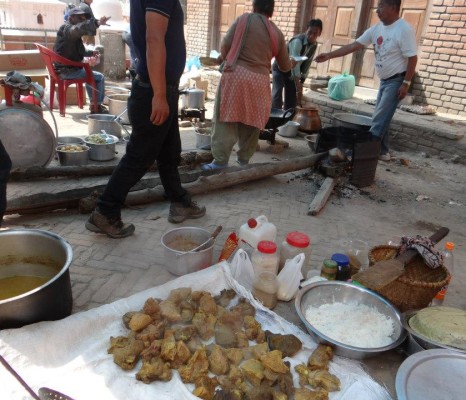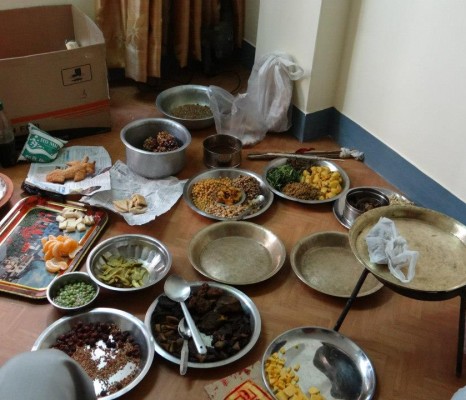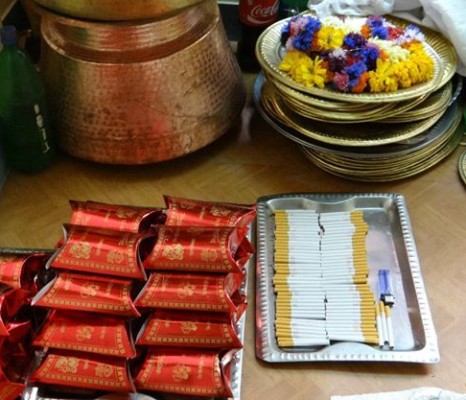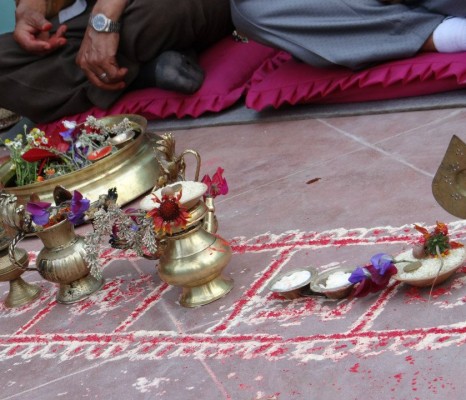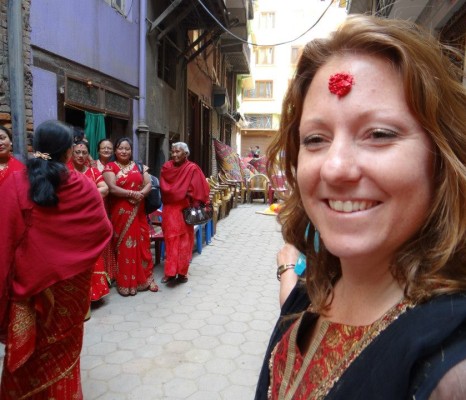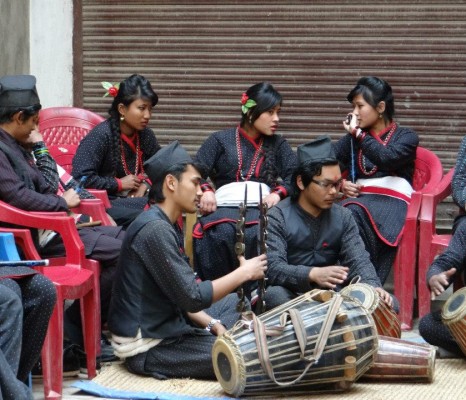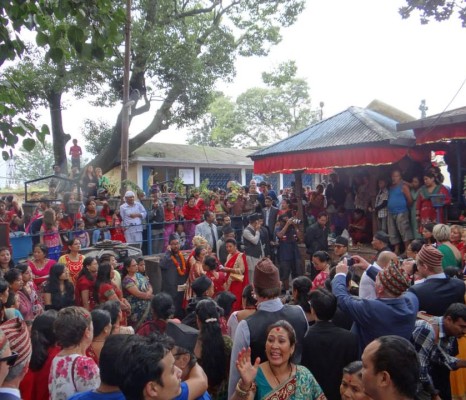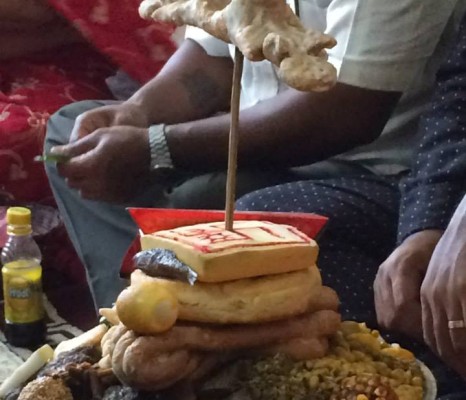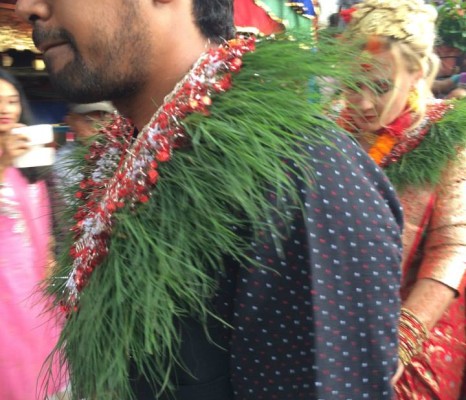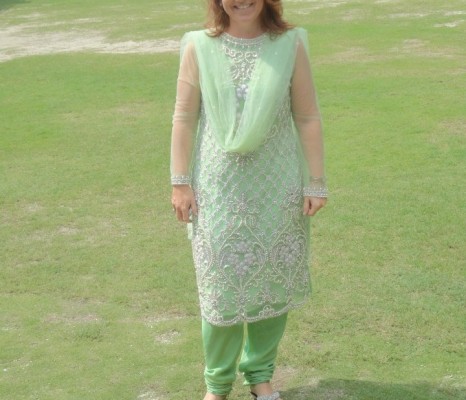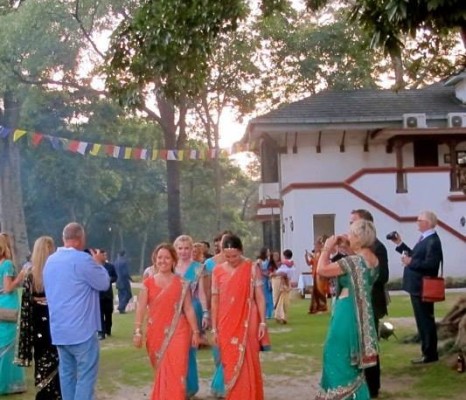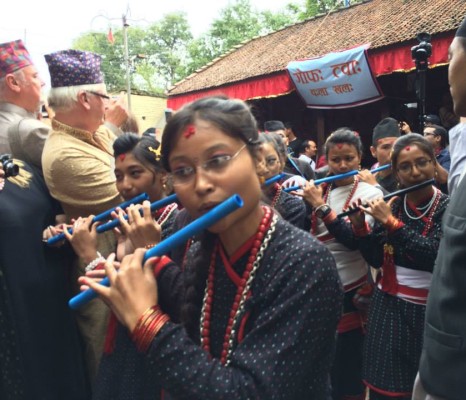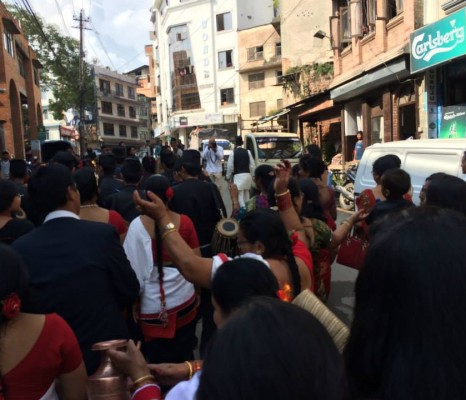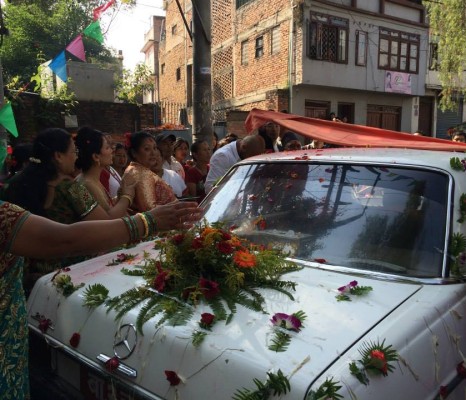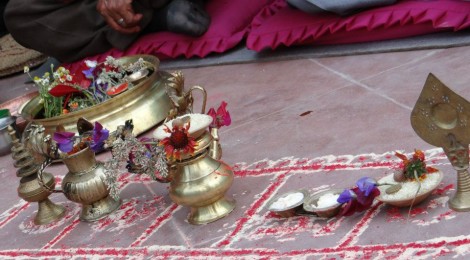
Nepalese wedding rituals
Wedding traditions in Nepal very considerably, but are all based on a mix of Hindu and Buddhist traditions. Nepal is the world’s only officially (constitutionally declared) Hindu nation, but Nepalese Hinduism is different to that practiced in India. It has mingled with the Buddhism of the Tibetan hill tribes over the centuries and has therefore incorporated many Buddhist themes and iconography into its practices.
I have now attended two very different traditional weddings in Nepal (I wrote about the first here) and have been keen to understand more about what I’ve seen. At the last wedding (that of one of my closest friend’s to her Nepalese fiancée), the bride had very kindly printed a summary of what to expect from the temple celebration. For anyone else due to attend a Nepalese wedding, I thought it might be useful to share her guidance, along with the results of some additional online research, to explain a bit more about the meanings of each of the rituals for the day of the temple celebrations (celebrations last up to three days, each day with different traditions):
Ganesh Pooja:
The ceremony begins with the invocation of Lord Ganesh through the lighting of incense sticks and prayers.
Swayambar:
Large grass garlands are exchanged between the bride and the groom.
Madhuparka:
The bride’s parents offer milk, yoghurt and ghee to the groom to represent the sweetness of life that the couple will have together.
Tilhari:
A necklace with a gold pendant is placed around the bride’s neck by the groom. This is worn throughout the wedding, at certain religious festivals throughout the year, and on a regular basis as a symbol of marriage (much the same as a Western wedding ring).
Kanyadan:
The bride is given away to the groom by her father when he joins their right hands together.
Gath Bandhan:
The tying of the nuptial knot. One scarf is tied to the bride, another to the groom, and the two are knotted together as a symbol of the couple’s eternal bond and their pledge to be faithful to each other.
Flavan & Managalphera:
Fire serves as divine witness to the ceremony. The bride and groom circle the fire (pheras), representing their journey through life together.
Sapfapadi:
The bride and groom make seven circuits of the fire together, each with a different vow. With the first circuit, they promise that they will take care of each other and pray for abundant blessings and prosperity in life. With the second circuit, the couple prays to be blessed with physical and mental power in order to have a healthy married life. During the third circuit, they promise to protect and increase their wealth by proper means. With the fourth circuit, they pledge to share happiness and sadness together. On the fifth round, the couple promises to be responsible and care for their children, while the sixth represents being together always. Finally the seventh circuit is where the couple promise to be truthful and trustworthy to each other and always be united in friendship and harmony. Throughout this ritual, the bride and the groom pray to be together forever without having any quarrels to break their relationship, and think not only about their own desires, but also those of the entire family.
Sindoor:
The groom applies sindoor (red pigment made from powdered red lead) to the bride’s parting in her hair and welcomes her as his wife. The sindoor is a visible expression of the wife’s desire for their husbands’ longevity as it is believed to protect the husband. A married woman should therefore apply the sindoor everyday, although most would only apply it for festivals and important functions nowadays.
Ashiwad:
The bride and groom receive blessings as a couple from all assembled as they circumnavigate.
There were a couple of less serious traditions too, the first being when the younger female family members stole the groom’s shoes during the main event, and he then had to barter in front of everyone to get them back (with lots of encouragement from the watching crowd for both sides). The bride also gets her fair share when, after reaching the groom’s family home, the female relatives block her way and demand money from her to enter, again much to the amusement and encouragement of the crowd.
The entire wedding party walk and dance through the streets together after the ceremony to have a meal together, with the bride and groom being driven in a car festooned with flower garlands in the centre.
In addition, there is usually an evening party on a different day for family and friends, where all ladies wear beautiful saris (compared to the day at the temple where there are a mix of saris and much more practical khurtas) and the bride and groom sit together on a stage to be offered gifts and blessings while their guests eat, drink and dance. This is often split, one for the bride’s family and friends, and one for the groom’s. There are also plenty of other traditions to be performed in the home, which are usually only witnessed by the family.
It is worth bearing in mind that on the day of the main celebration, the bride is supposed to look forlorn to show how sad she is to be leaving her own family to join another, and this is taken very seriously, so don’t expect any big smiles and posed pictures from the bride on the day, until the ceremony is concluded.
I’m sure there are plenty of other rituals and traditions, depending on the tribes and backgrounds of the families who are being joined, however this appears to be a good summary for the two that I have attended.
For those lucky enough to be invited to a Nepalese wedding now or in the future, I hope you enjoy this powerful and unique experience as much I did!











